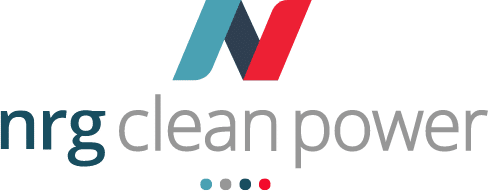Explore the dynamic growth and innovation within the solar energy landscape, characterized by remarkable technological advancements, robust policy support, and increasing dedication to sustainability.
With advancements in photovoltaic (PV) technology leading the charge, we’re witnessing the dawn of a transformative era in renewable energy.
Let’s look into pivotal trends and groundbreaking innovations that are reshaping the landscape of solar energy.
Expected Developments in Solar Energy
The future of solar energy is promising, with ongoing growth and innovation anticipated across the industry. Here are some of the key trends and advancements poised to define the trajectory of solar energy in the years ahead:
- Increased Adoption
- Growing Role
- Technological Advancements
- Solar Energy Storage Innovations
- Decentralized Solar Power
- Artificial Inteligence Integration
- Solar Fuels
Increasing Adoption
The adoption of solar energy is anticipated to maintain its rapid expansion, driven by numerous countries’ ambitious goals for solar power deployment.
With the declining cost of solar technology and the increasing recognition of its environmental advantages, an escalating number of individuals and businesses are expected to embrace solar as a primary electricity source.
Growing Role in the Transportation Sector
Solar energy is anticipated to assume a more significant role in the transportation sector, notably through the emergence of solar-powered vehicles and the integration of solar panels to power electric vehicles.
Policy and Regulatory Support
Government policies and incentives are pivotal in influencing the trajectory of solar energy in the years ahead. We foresee a heightened focus on sustainability, with governments globally enacting measures to promote solar adoption.
Anticipated incentives like tax credits, feed-in tariffs, and favorable regulations will stimulate investments in solar initiatives, fostering an environment conducive to industry expansion.
Solar Technology Advancements
The solar sector is experiencing significant technological progress aimed at enhancing the efficiency and accessibility of solar energy.
Innovations like perovskite solar cells, bifacial modules, and advanced energy storage solutions are driving improvements in efficiency and cost reduction.
These advancements are not only enhancing the competitiveness of solar power but also broadening its potential applications across diverse sectors.
Decentralization of Solar Power
The emergence of peer-to-peer energy trading platforms and progress in microgrid technology are spearheading decentralization in the solar energy field.
These developments empower people to manage their solar power production and consumption autonomously.
Integration of AI
The incorporation of artificial intelligence (AI) is set to transform solar energy management, as AI algorithms predict energy production, optimize solar panel positioning, and enhance system efficiency.
This development is projected to fuel a notable rise in the adoption of AI-driven technologies in solar installations, resulting in enhanced performance and more efficient system management.
As we look forward, the future of solar energy holds a lot of promise.
Solar Energy Storage Solutions
With the growing prominence of renewable energy sources, the need for efficient energy storage solutions becomes more apparent.
In the future, significant advancements in solar energy storage are expected, featuring enhanced battery technologies and innovative storage systems.
These developments will play a crucial role in tackling the intermittent nature of solar power and ensuring a dependable energy supply.
Solar Fuels
Chemists, engineers, physicists, and materials scientists have long collaborated to pioneer artificial photosynthesis, aiming to utilize sunlight’s energy for producing liquid fuels from water and waste gases.
To bring this vision to fruition, these researchers are innovating new catalysts, accelerating chemical reactions, developing new materials capable of carrying electrical charges during these reactions, and devising strategies to streamline the conversion process.
Latest Innovations in Photovoltaic Technology
Let’s explore 5 innovations in solar energy and their potential to reduce our reliance on fossil fuels, lower costs, and promote environmental sustainability.
Perovskite Solar Cells
Perovskite solar cells offer a groundbreaking advancement in solar technology, providing a more cost-effective and efficient alternative to traditional silicon cells. This innovation significantly enhances the accessibility and effectiveness of solar power.
Transparent Solar Panels:
Transparent solar panels represent a notable innovation, particularly for Building-Integrated Photovoltaics (BIPV). These panels can seamlessly integrate into windows and glass surfaces, opening up new possibilities for solar energy utilization in buildings while maintaining aesthetic appeal.
Floating Solar Farms
Floating solar farms introduce a novel concept where solar panels are installed on water bodies. This innovation not only conserves land space but also improves panel efficiency by leveraging the cooling effect of water, contributing to more efficient energy generation.
Solar Skins:
Solar skins present an innovative technology enabling customizable appearances for solar panels, allowing them to blend harmoniously with their surroundings. This innovation is particularly advantageous for residential and commercial buildings where visual integration is essential.
AI-Optimized Energy Systems
The integration of Artificial Intelligence (AI) in optimizing solar energy systems is a cutting-edge innovation. AI algorithms can accurately forecast energy production and consumption, facilitating intelligent energy management and seamless integration with the grid, thereby enhancing overall system efficiency.
Challenges and Anticipated Solutions
Photovoltaic panels cease electricity generation at night, prompting utility companies to resort to fossil fuel-generated power to fulfill consumer needs.
Renewable energy sources can complement solar power, with both utility companies and rooftop-solar consumers increasingly investing in battery storage to extend solar energy utilization.
An ambitious alternative involves generating solar power in space and transmitting it to Earth via antennas, eliminating dependence on daylight hours entirely.
The Future of Solar Energy in a Nutshell
Utility-scale solar installations necessitate large land areas, potentially conflicting with agricultural and wildlife habitats. Current solutions include installing solar arrays on warehouse roofs, capped landfills, contaminated mines, and, with specialized designs, reservoirs and agricultural land.
Despite hardware costs decreasing, non-hardware expenses for rooftop solar installations decline at a slower pace. Complex permitting processes, grid connections, and utility pricing can deter buyers. Streamlining measures such as apps and improved federal guidance and policies show promise.
While solar panels have long lifespans, they will eventually require replacement. Researchers are exploring recycling, reusing, and reselling methods in preparation for this eventuality.


